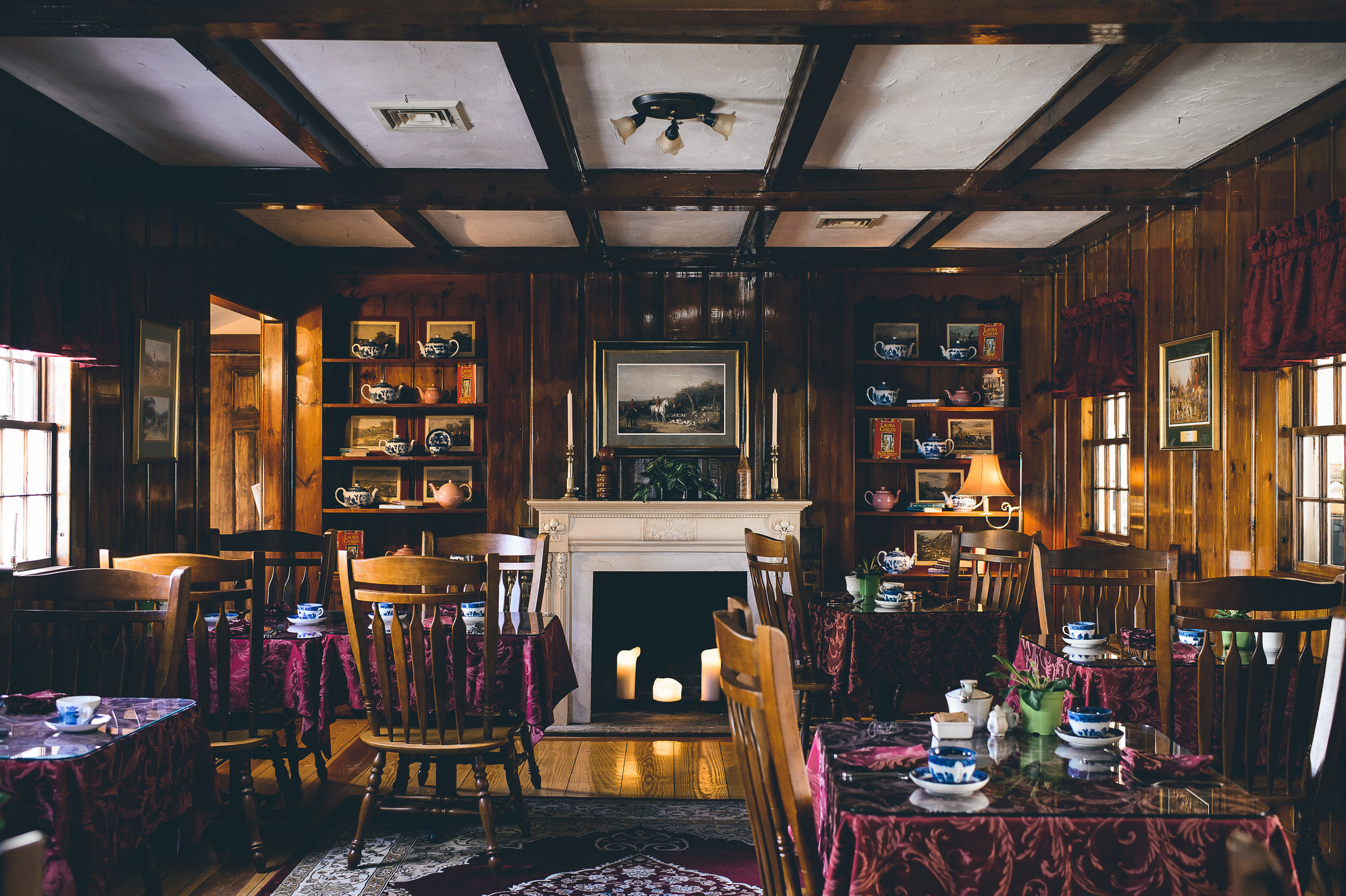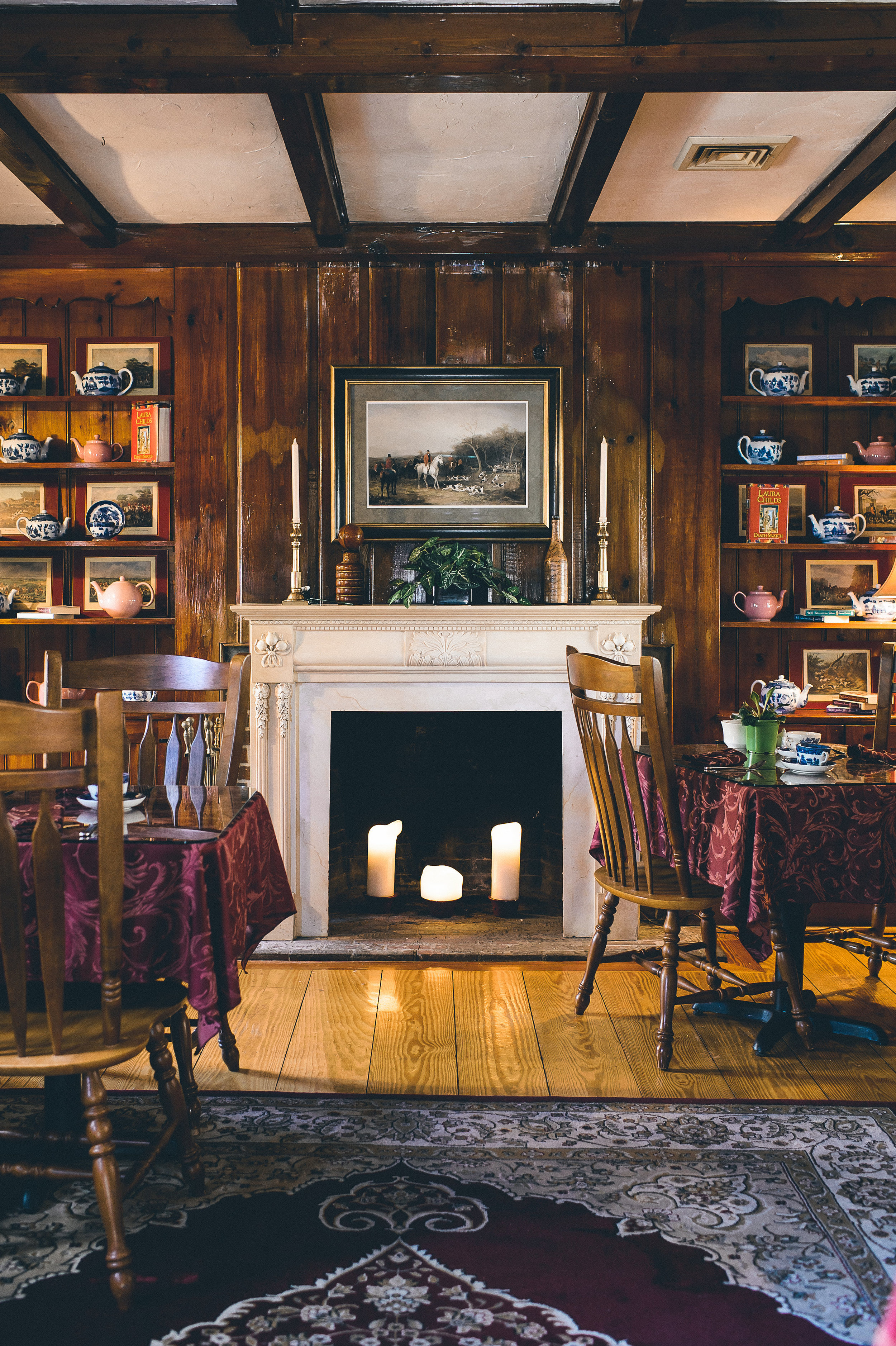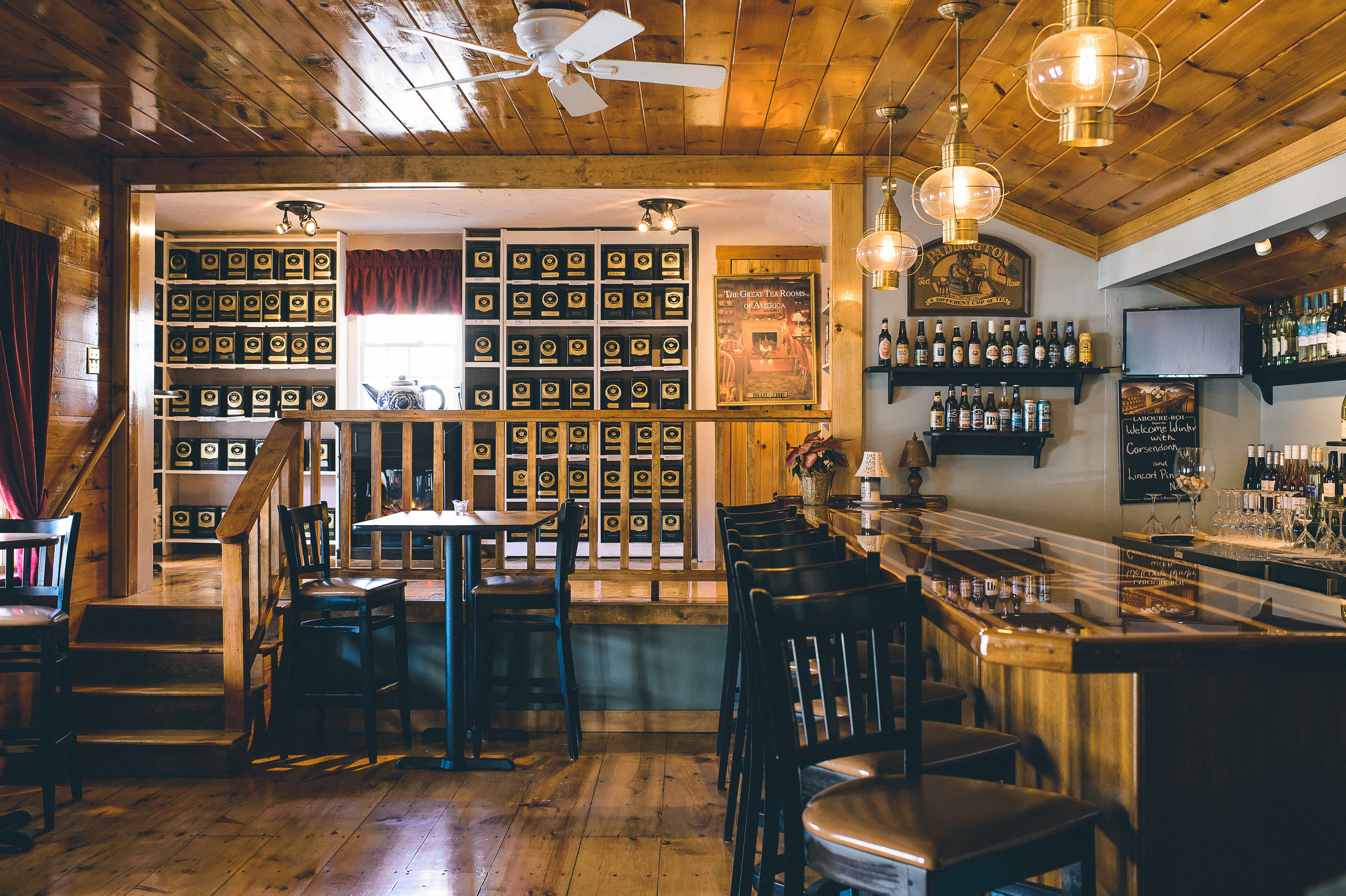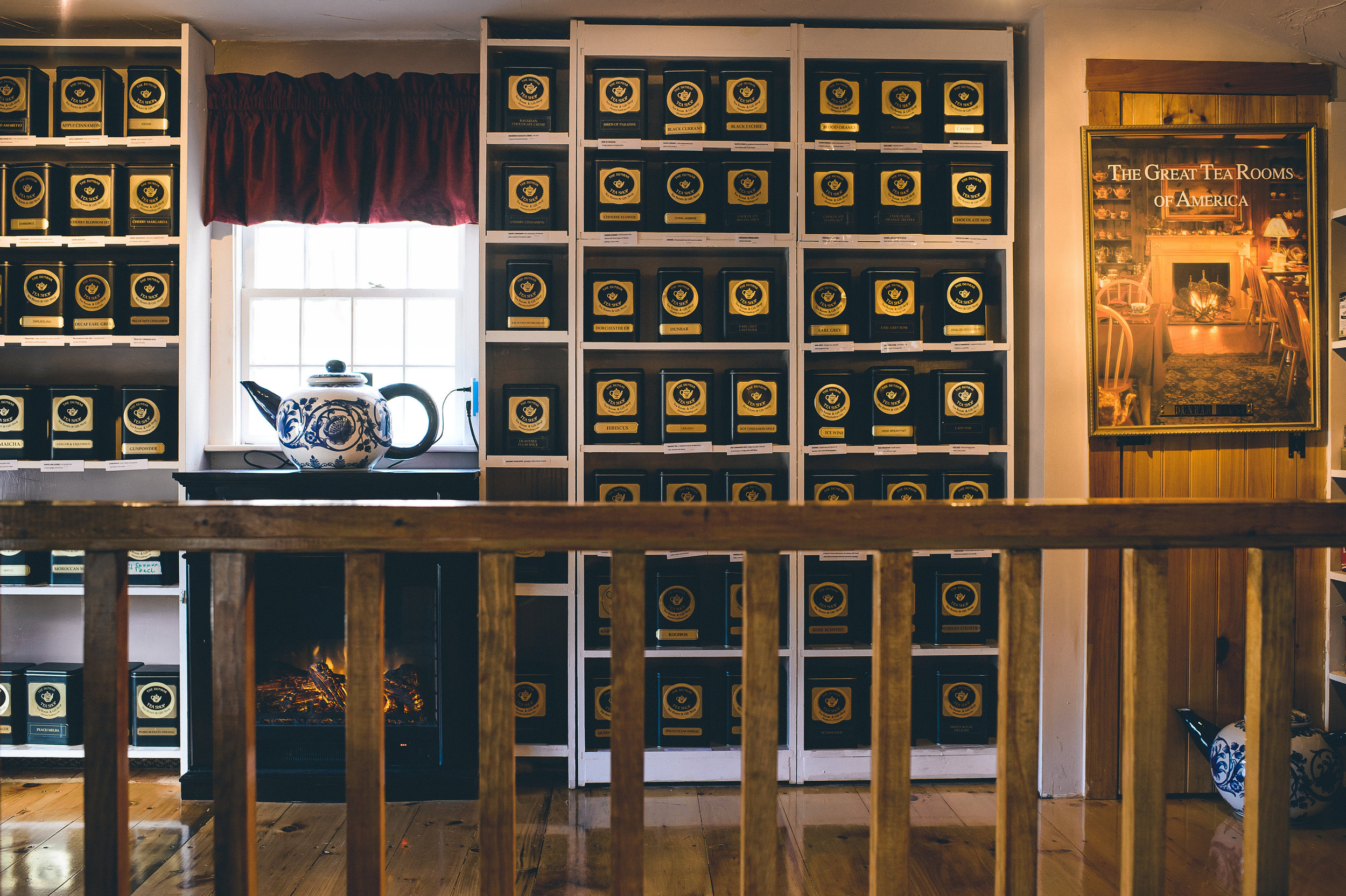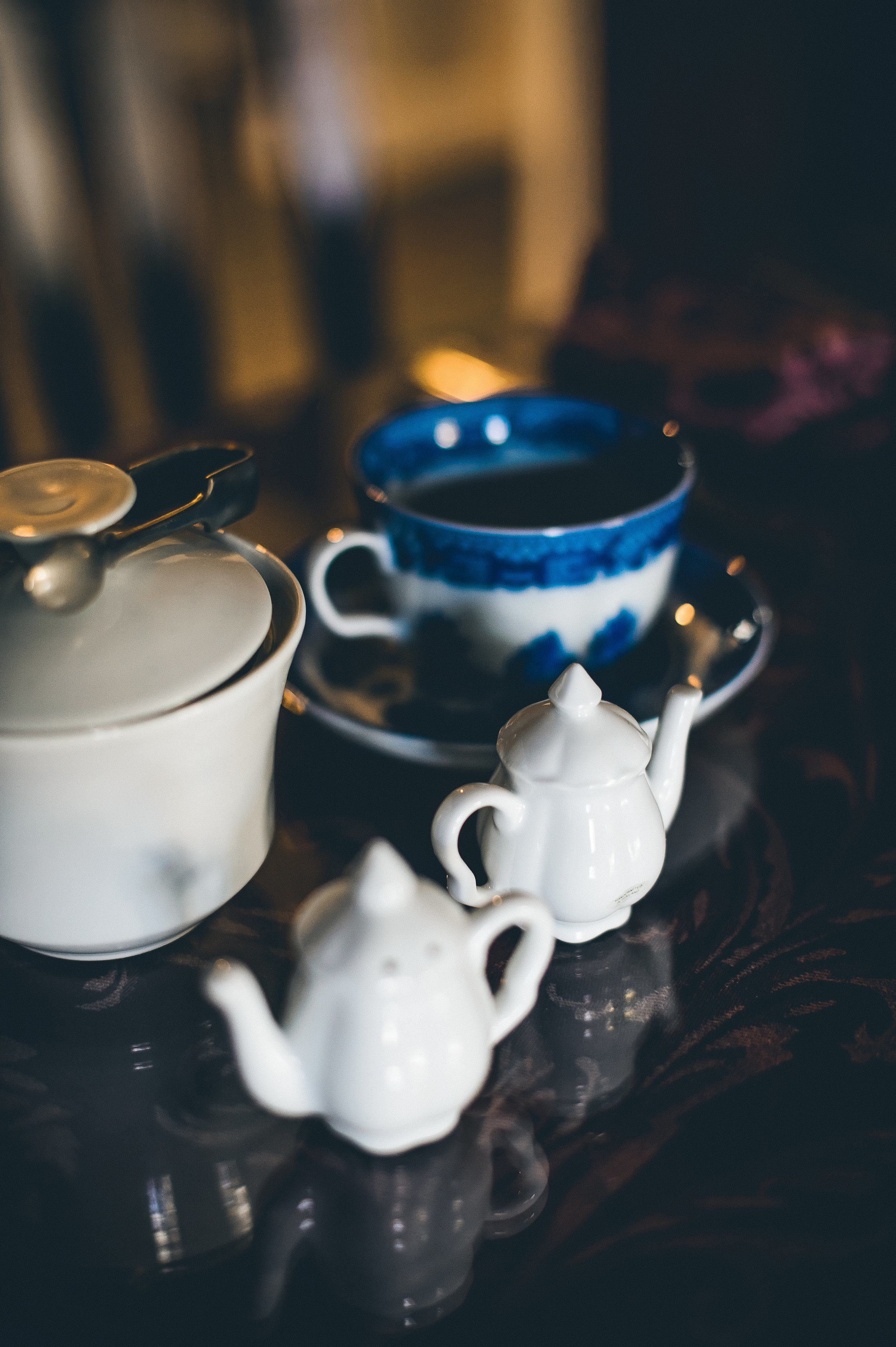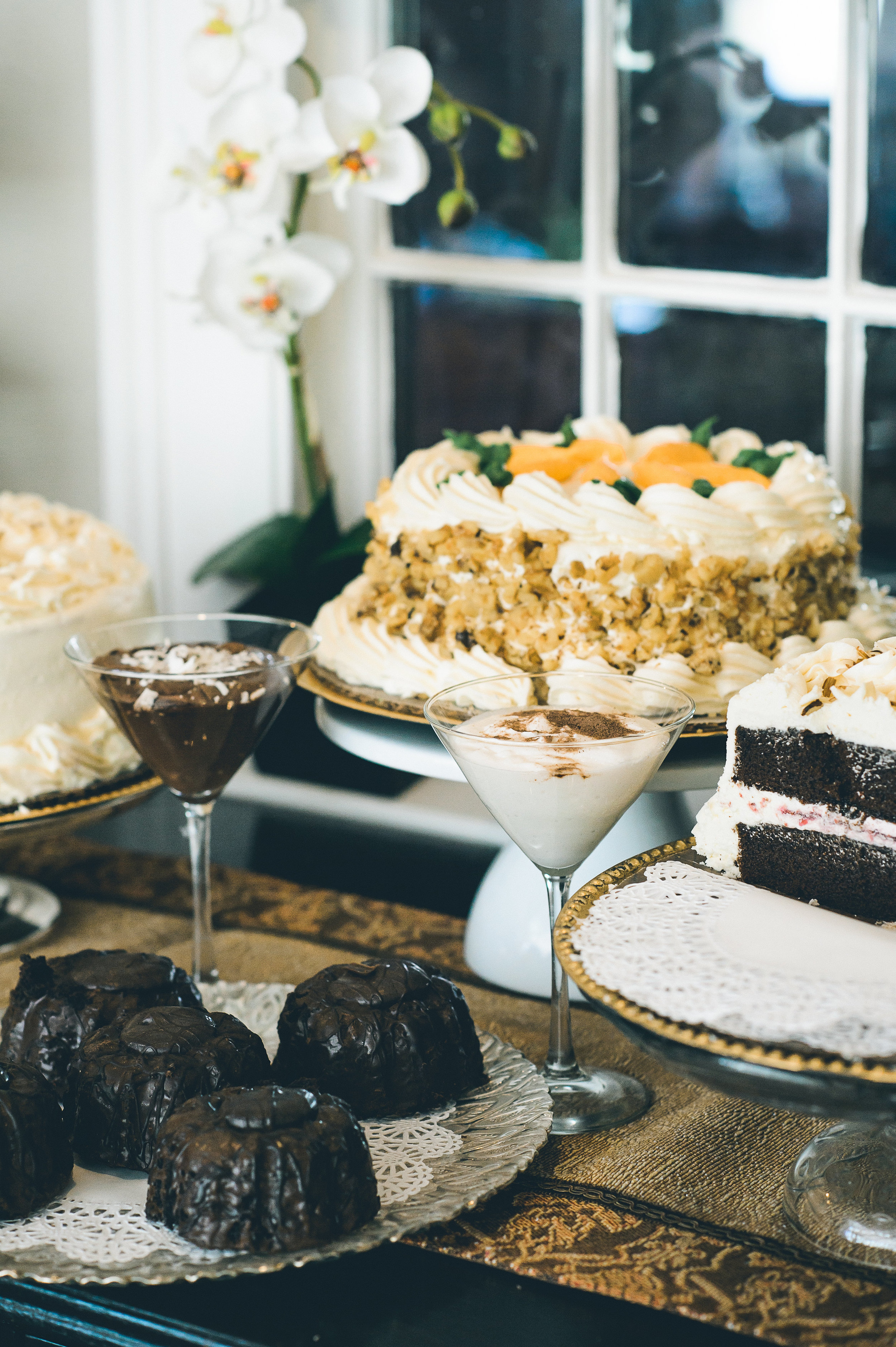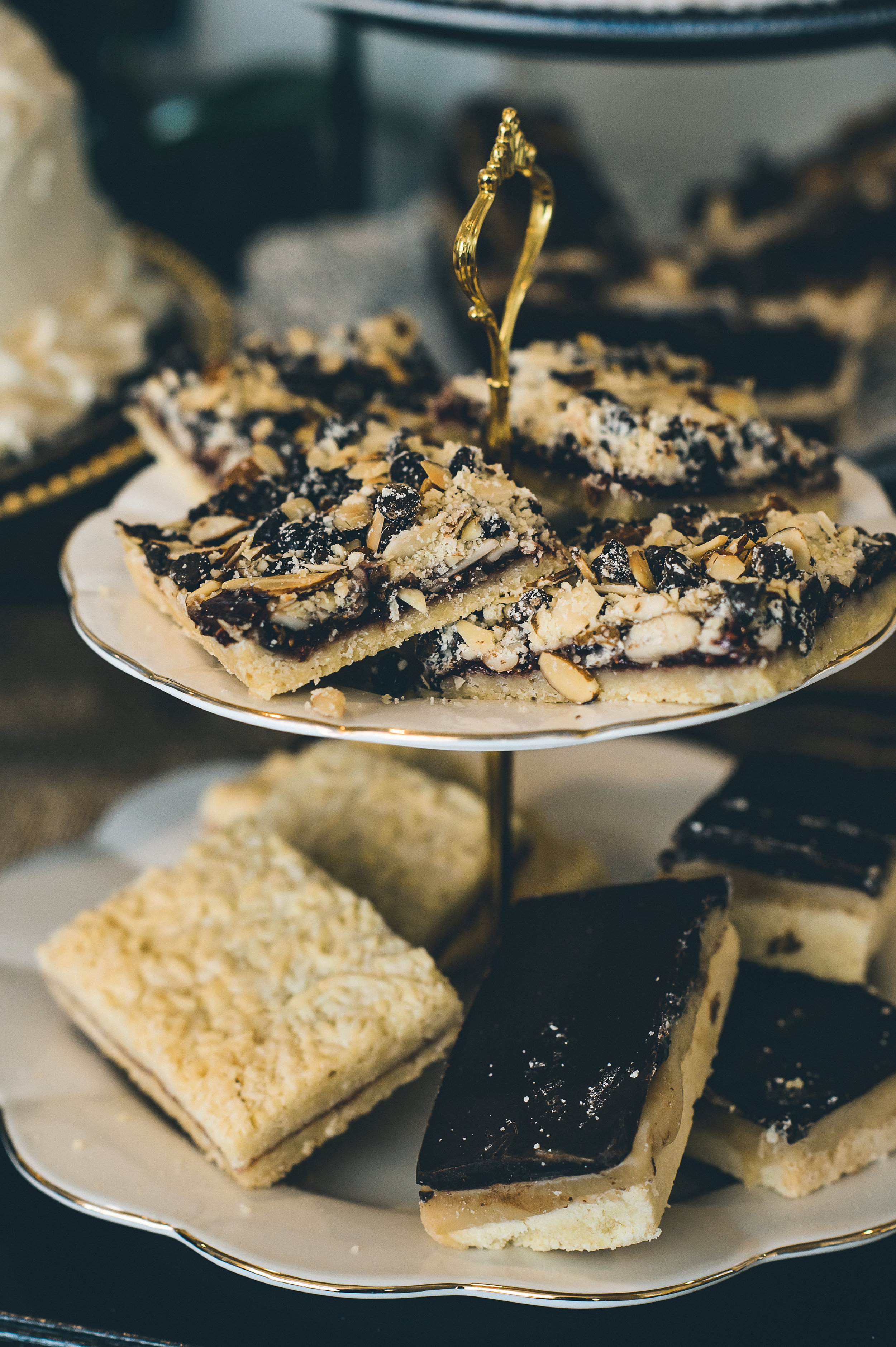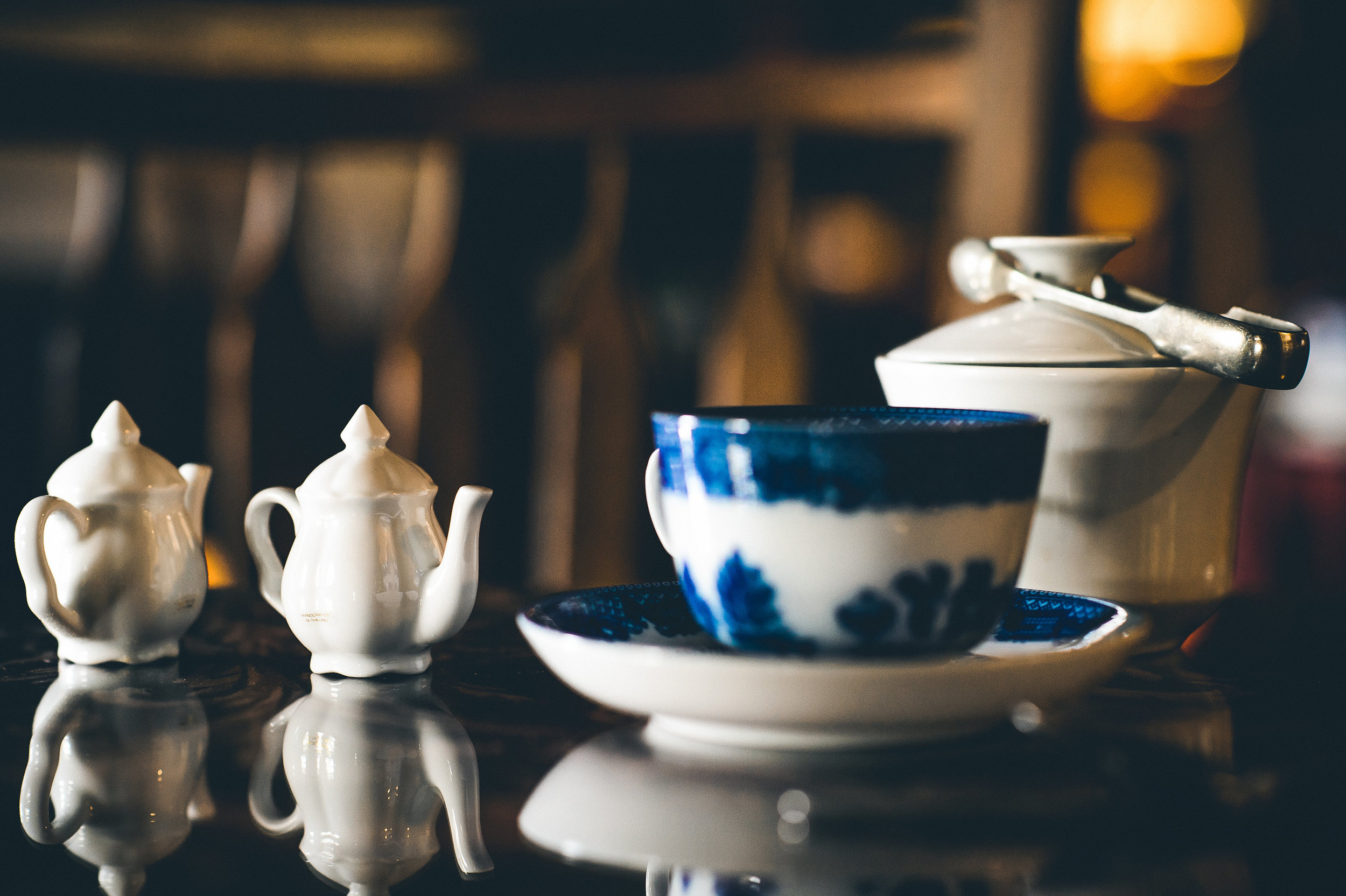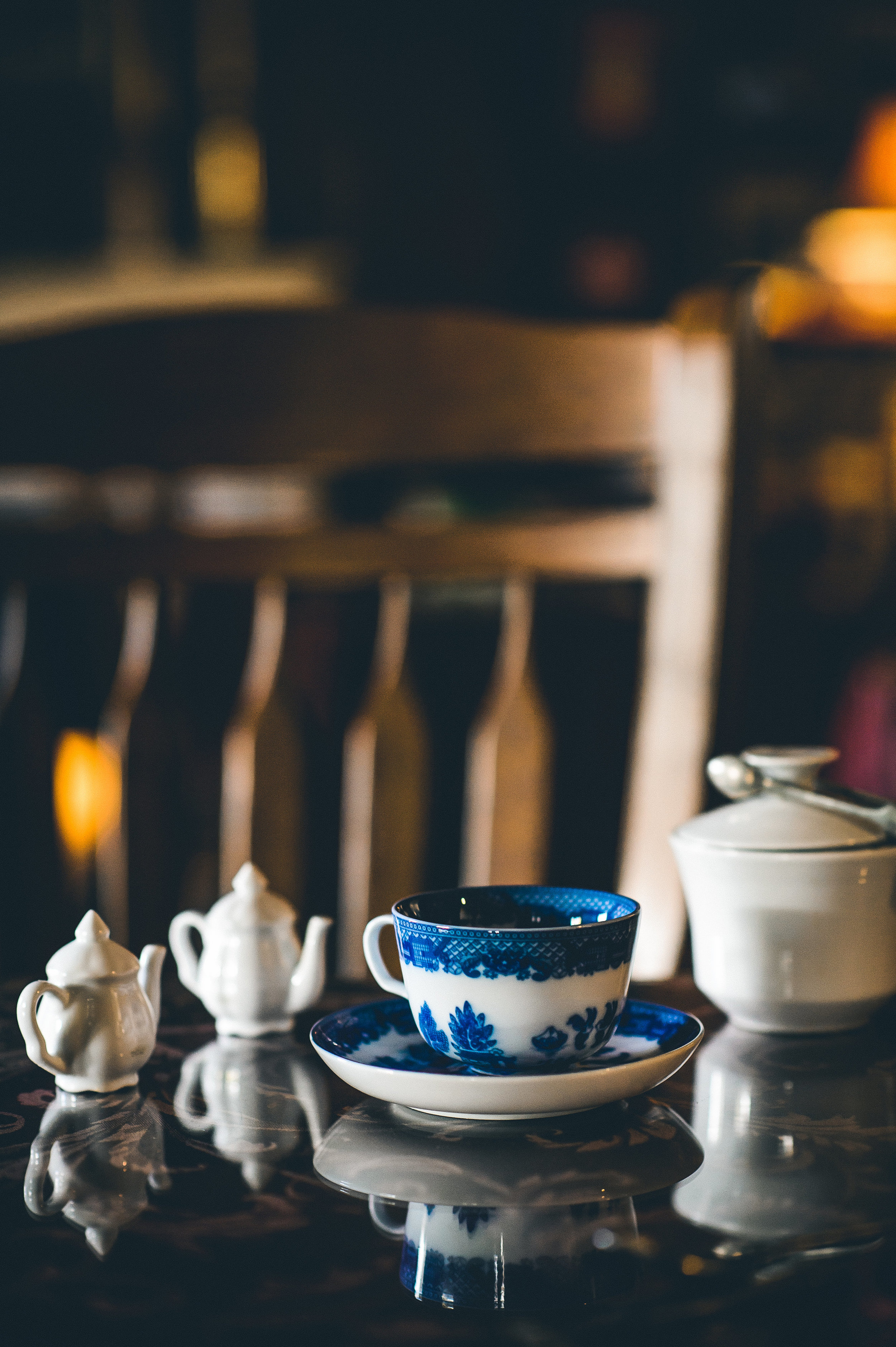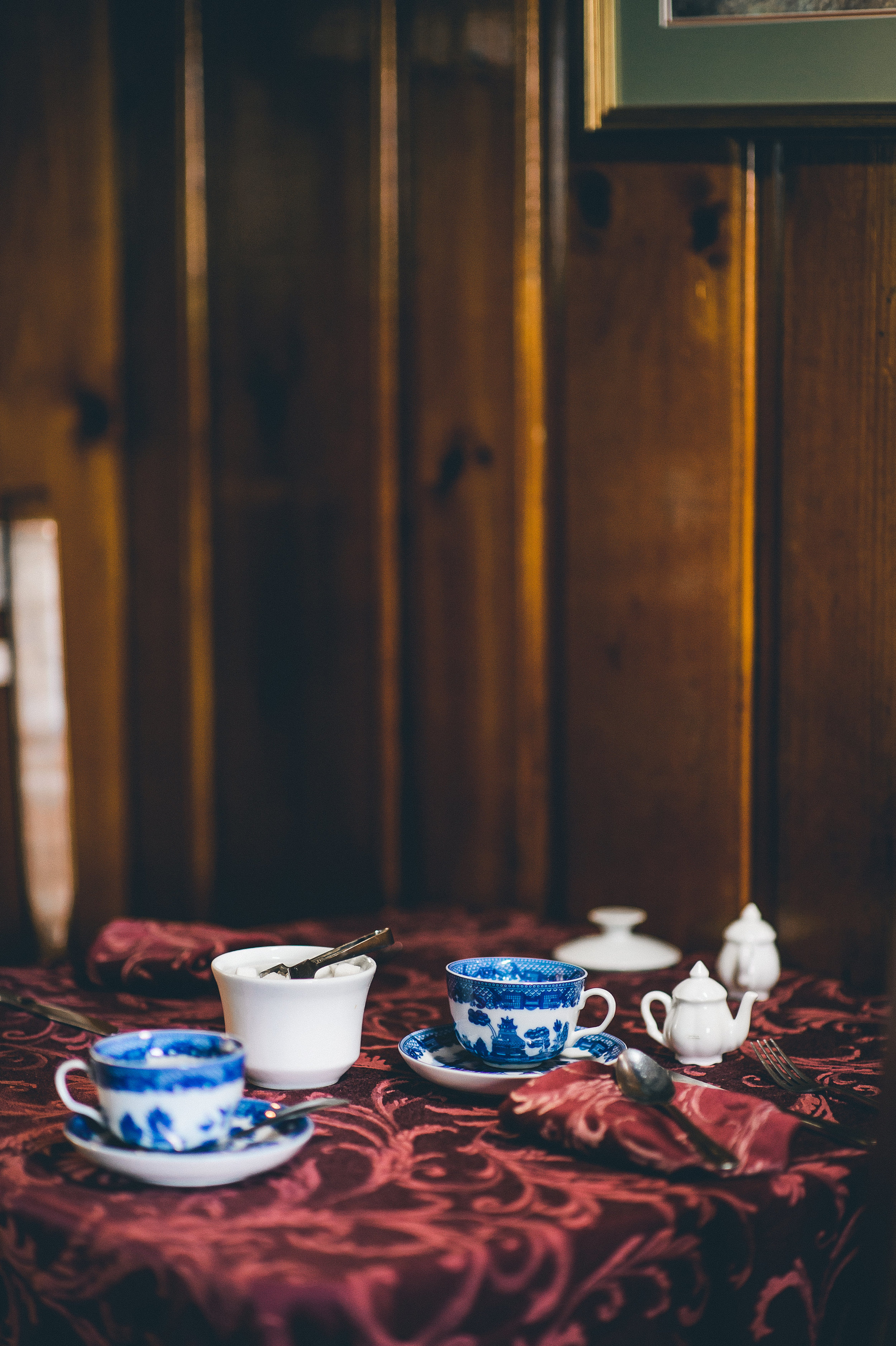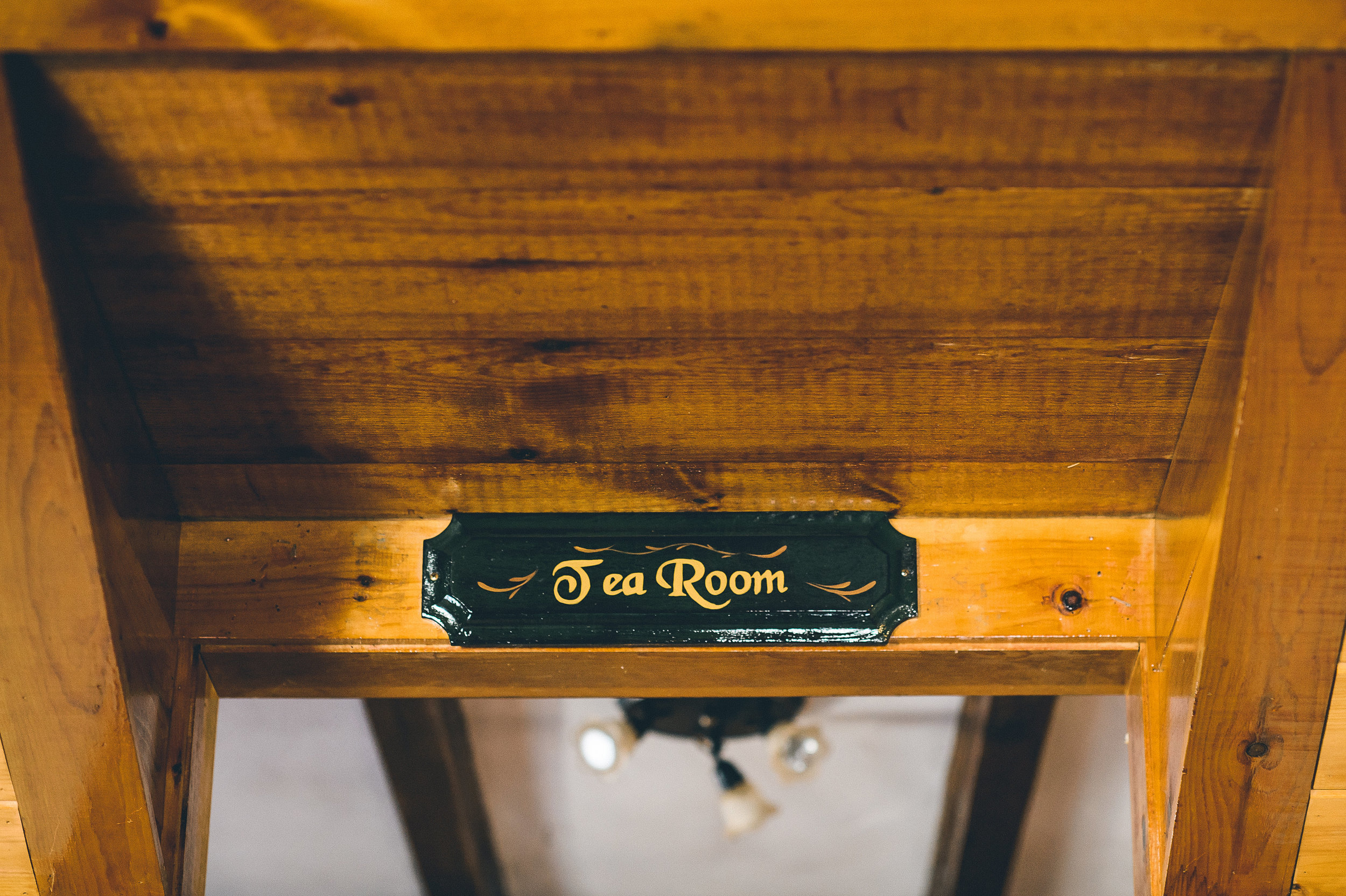tell northeast:
uncovering regional stories worth sharing.
A Ritual is Brewing:
Tea in New England
Words by Katherine Hysmith
Photos by Briana Moore
“Some people will tell you there is a great deal of poetry and fine sentiment in a chest of tea.”
- Ralph Waldo Emerson -
The morning of December 16, 1773 was just like any other in colonial Boston. Beds were made, boots were laced, chores were seen. And, for those who could still afford and overlook the newly imposed tax, a pot of tea was likely served. But in a matter of hours, this seemingly mundane routine, this everyday ritual, was about to change. As tea-strained patriots gathered in anger over the unjustified tariffs levied on a culturally vital beverage, a plot was brewing that would alter the drinking preferences of the new nation for generations to come. That night, 342 chests of fine Chinese tea went into the harbor. The table was set, the tea served, and Boston was having none of it.
We now know this particular political act as the Boston Tea Party, a move that had less to do with a dislike for British tea and more with a growing frustration towards an increasingly despotic government. Considering the importance and sheer rate of consumption, some might say that tea was much more than a symbol in our young nation’s fight for independence, but a grand gesture in what our forefathers were willing to do in order to live free.
Despite their best intents, our patriotic forefathers had a difficult time boycotting their favorite beverage. The dependence - both culturally and socially - on tea was so great that equal or superior substitutes were immediately sought. For the lucky few, illegally imported Dutch tea sufficed, while others had to make do with herbal tisanes and Native American recipes that combined local plants and herbs - such as thyme, sage, spicebush, sassafras, chamomile, mints, verbena, and raspberry leaf - that grew wild in the area or in colonial gardens. These blends were politically known as “Liberty Teas” and became part of the domestic arsenal against British tyranny.
With the war won, and tensions relatively cooled, the teapot was finally lifted from the political platform. A young America negotiated trade with China, sending local merchant Elias Hasket Derby of Salem and his famous ship, the Grand Turk for long-awaited goods including black and green teas. Over the next two centuries, the beverage played various roles in our history and new cultural interpretations of tea from places like Russia, France, and Asia took root in our society. Tea time ranged anywhere from an afternoon to an all-day affair, depending on who you asked and how it was served - hot or cold, with food or without, sitting on the floor or seated in a parlor.
In the first half of the 20th century, tea drinking was considered a pastime as tearooms and teahouses popped up across the United States in great numbers. These establishments often served light fare - such as sandwiches and pastries - and offered a kind of sophisticated recreation. In the 1920s, rooms in a historic 18th century home in Sandwich, MA were renovated by Mrs. Dunbar to serve tea to her friends. While the property has since switched hands, the historic Dunbar House continues to offer tea service, as well as a full restaurant menu, and sells over 220 blends of loose-leaf tea. Around the same time, local socialite Charleen Baker started the Buttercup Hill Tea Room in Lunenburg, MA, serving her own home cooking and tea. While the tea room went out of business in the 1940s, copies of the yellow-and-black bound Buttercup Hill Tea Room Cookbook can still be found tucked away in antique bookstores, just waiting for the curious tea drinker.
As our country and our lives became exponentially faster-paced, pastime tea drinking grew less popular. Tea pots collected dust, loose leaves were bagged, and the microwave took the place of the whistling kettle. For the majority, a cup of tea, positioned alongside bland, drip coffee, simply became yet another way to hurriedly start the day. But bit by bit, things are starting to slow back down.
As the globe shrank, New England, particularly Boston, started to shove off its anti-tea mentality, opening the doors for tea drinkers, those “quiet consumers” and welcoming purveyors like Upton Tea Importers of Holliston, MA. Long before the modern day tea boom, Upton started business in 1989 with a simple quarterly publication on tea, hoping to educate American consumers about the history and the process of the lost beverage. Hundreds of teas and many publications later, Thomas Eck, founder of Upton Tea, says his company provides “good tea at any cost,” and that tea should be kept simple, “not fussy.”
Waltham based MEM Tea Imports, started in 1999, specializes in sourcing and blending loose leaf teas for the food service industry. Their wares are on cafe and restaurant menus across the Greater Boston Area and the importer strives to train its customers on the ins and outs of tea preparation. According to Director of Operations, Meg Tartasky, “the great thing about tea is there is at least one tea if not dozens out there for you,” and that “tea encompasses the full spectrum of flavor profiles.”
To cater to that spectrum, tea shops of all persuasions have opened throughout the area. Small shops like Tealuxe in Harvard Square encourage us to bring the ritual into our daily home life. Bohemian style rooms like Dobra Tea in Portland, ME and French salon inspired cafes like Jolie Tea in Salem, MA invite us to embrace the charm of savoring theOld-school tea rooms like Tea with Tracy in Seymour, CT and the Wenham Tea House on the North Shore often draw in traditionalists, while the Stone Leaf Teahouse in Middlebury, VT takes us to exotic new lands. Each of these establishments provide a unique approach to the same basic beverage. As Amy Job, proprietor of Jolie Tea, explains, “tea has enriched lives for literally hundreds of years,” and “[it] isn’t going to be ignored anymore.”
Even high end restaurants, like Boston’s L’Espalier, understand the growing importance of tea. While the restaurant doesn’t provide that early morning ritual, the afternoon weekend service offers a similar experience for late risers. In-house tea sommelier, Cynthia Gold explains that L’Espalier is “inspired by the classic afternoon tea experience, but [doesn’t] feel constrained by it. A tea menu, like a wine menu, should change seasonally to not only support the seasonally changing food menu, but to feature the season’s freshest and most exciting finds.”
Those same tea seasons are what Caleb Hodes, founder of Boston Teawrights, relies on, too. As his company’s name suggests, Hodes is in the business of tea craft and takes the idea of bespoke blends one step further by using raw tea leaves. Unlike other importers, Hodes sources raw leaves from growers in New Zealand and Taiwan and teaches his clients and customers how to turn the plant into their own unique brew. For Hodes, the ritual begins long before the tea and water meet and says that “working from the beginning does change quite a few things...it gives you a significantly deeper appreciation for the work and art that goes into tea.” He adds that the “absolutely best way to prepare and drink it, is however it tastes best to you individually.”
All tea - be it green, black, white, or oolong - comes from the same basic leaf, camellia sinensis. It is what we do with the leaf that makes all the difference. With so many variations, there is no one way to drink it, no one way to incorporate it into your day, and no one way to turn it into your own personal ritual. Whether your morning starts at dawn or you roll out of bed by noon, it’s tea time.


